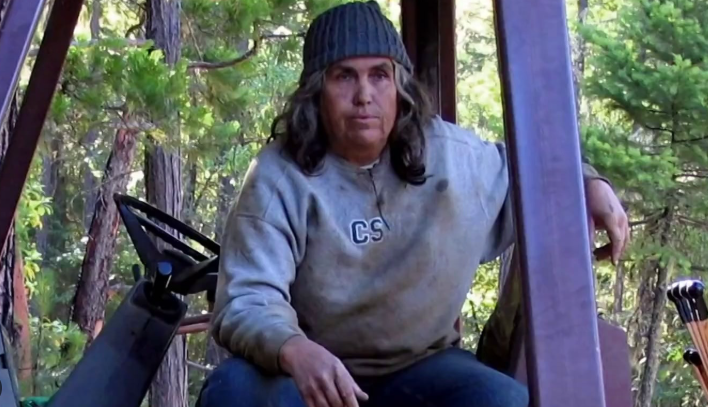Susan Monica: The Pig Farmer Killer of Oregon

Susan Monica: The Pig Farmer Killer of Oregon
In the lush and remote woodlands of southern Oregon, a secluded pig farm became the site of one of the most gruesome murder cases in modern American history. The perpetrator was not a hardened career criminal or an infamous fugitive, but a reclusive woman named Susan Monica — a former engineer turned pig farmer — who shocked the nation with her chilling crimes. Nicknamed “The Pig Farmer Killer,” Monica murdered at least two men and fed their dismembered bodies to her pigs in an effort to conceal her deeds.
This disturbing case, with its grotesque details and unconventional criminal, captivated the media and true crime enthusiasts alike. But beyond the sensationalism lies a deeper story of mental instability, isolation, and the deadly consequences of unchecked violence in the shadows of rural America.
Who Was Susan Monica?

Susan Monica was born Steven Buchanan in California and later transitioned, adopting the name Susan. Her background was somewhat unusual: she was a military veteran who served in the U.S. Army and worked as a self-taught engineer. Known for her intelligence and mechanical skills, she eventually left behind conventional society and moved to a remote part of Wimer, Oregon, to live off the grid.
She purchased a 20-acre farm, raised pigs, and lived in near isolation, though she occasionally hired handymen and laborers to help with tasks around the property. Neighbors described her as eccentric and private — someone who preferred the company of animals to people.
Despite her reclusive lifestyle, Monica was not entirely cut off from the outside world. She frequented local hardware stores, communicated with veterans’ groups, and sometimes took in drifters or struggling individuals in exchange for labor. However, what no one knew was that the farm had become the final resting place for at least two unsuspecting men who had trusted her.
The Disappearance of Robert Haney
The unraveling of Monica’s crimes began in January 2014, when the family of Robert Haney, a 56-year-old handyman, reported him missing. Haney had been working on Monica’s farm and living in a makeshift trailer on her property. He was a quiet man who had lost his job and home, and the opportunity to work on the farm gave him a second chance.
For months, Haney’s children tried to contact him, but their calls went unanswered. Concerned, they visited Monica’s farm, where she offered a vague explanation: Robert had supposedly left the farm months earlier and never returned. Suspicious, his family contacted the police.
What investigators found would launch one of Oregon’s most shocking murder cases.
The Discovery at the Farm
Police officers arrived at Susan Monica’s pig farm to investigate Haney’s disappearance. Initially cooperative, Monica repeated her story that Haney had simply left one day. But inconsistencies in her account raised red flags. Officers noted the dilapidated state of the property, the large number of pigs, and the chaotic environment.
During a search of the farm, investigators discovered human remains in and around the pig pen. When confronted, Monica confessed to shooting Robert Haney, claiming she did so after catching him “messing with her guns” in the house. She said the shooting was in self-defense, but instead of calling authorities, she panicked.
Her solution? She fed his body to her pigs.
What remained after the pigs had eaten most of the corpse, she claimed, was buried or discarded on the property. DNA testing confirmed that the remains belonged to Haney.
But the horror didn’t stop there.
The Second Victim: Stephen Delicino

As investigators dug deeper into Monica’s past, they began reviewing the disappearances of other individuals who had once worked on her farm. Among them was Stephen Delicino, another handyman who had gone missing years earlier. Monica had previously explained that he had “just wandered off” and never returned.
Human remains later found on the property were identified as belonging to Delicino. His death, like Haney’s, had not been reported, and Monica’s explanations were again riddled with inconsistencies. While Monica initially denied responsibility, she eventually admitted to being involved in Delicino’s death as well.
In both cases, she attempted to dispose of the bodies by feeding them to pigs — a method long associated with folklore and crime thrillers, but rarely witnessed in real-life homicide cases.
Psychological Profile and Motives
One of the most chilling aspects of Susan Monica’s case was her demeanor and the matter-of-fact way in which she discussed the murders. During police interrogations and courtroom appearances, she maintained an emotionless, detached tone.
She told officers, “When you’re a farmer and have pigs, you get used to death. Pigs eat everything.”
Psychologists and investigators speculated about her mental state. Was she suffering from post-traumatic stress from her time in the military? Was she psychopathic? Did years of isolation and paranoia warp her perception of morality?
While no official diagnosis was publicly confirmed, many observers noted that Monica showed classic signs of antisocial behavior, including lack of remorse, manipulation, and a tendency to justify her actions.
Her motives remain murky. There was no financial gain evident in the murders, and both victims were destitute laborers. The killings seemed rooted in anger, control, or a twisted sense of justice.
Trial and Conviction
In April 2015, Susan Monica stood trial in Jackson County, Oregon, charged with:
-
Two counts of first-degree murder
-
Two counts of abuse of a corpse
-
Multiple counts of identity theft and deception (for continuing to use Robert Haney’s food stamp card and phone)
During the trial, prosecutors laid out the gruesome details of the crimes, emphasizing how Monica had not only murdered the victims but desecrated their remains. Evidence included her own confessions, forensic results from the property, and testimony from law enforcement.
Monica attempted to defend herself in court, firing her attorney midway through the trial — another sign of her distrust of authority and desire for control.
The jury found her guilty on all counts. She was sentenced to a minimum of 50 years to life in prison, effectively ensuring she would die behind bars.
Cultural Impact and Media Coverage

The grotesque nature of the crimes — particularly the use of pigs to dispose of bodies — made the case ripe for media attention. The story appeared on multiple true crime shows, including:
-
Snapped (Oxygen)
-
Killer Women (Investigation Discovery)
-
Evil Lives Here
-
Numerous YouTube documentaries and podcasts
The case also sparked urban legends and comparisons to fictional depictions of killers feeding bodies to pigs, such as in the film Hannibal. But unlike fiction, Monica’s crimes were all too real.
The trial and aftermath also prompted discussions about how isolated individuals, especially in rural settings, can fall through the cracks of social and mental health systems — sometimes with fatal consequences.
Final Reflections
The story of Susan Monica is a haunting reminder of how horror can lurk in the most unsuspecting corners. A quiet pig farm in Oregon became the stage for a disturbing descent into violence and depravity.
Her crimes shocked not only because of their brutality but because of the cold logic with which she approached them. There was no grand scheme, no financial motive, and no attempt to flee. Instead, there was an unsettling belief that what she did was justified, even normal.
Susan Monica is now serving her life sentence in an Oregon prison, where she will likely die. Her farm was abandoned, and the animals were rehomed.
For the families of Robert Haney and Stephen Delicino, justice came — but the pain of their losses endures.
And for the rest of the world, the case remains a dark and unforgettable tale of what can happen when isolation, instability, and violence converge in the shadows of rural life.





